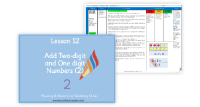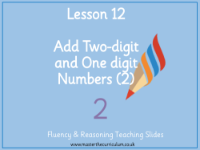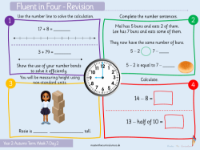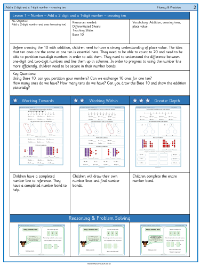Addition and subtraction - Add two-digit and one-digit numbers 2 - Planning
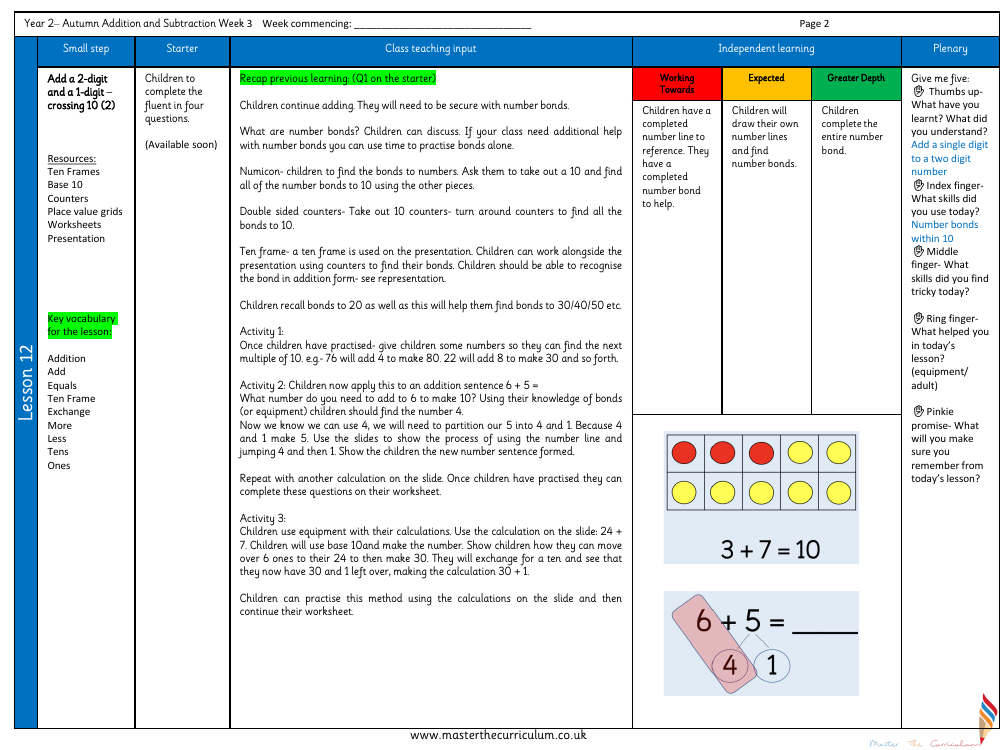
Maths Resource Description
In the Year 2 curriculum covering Autumn Addition and Subtraction, Lesson 7 focuses on teaching children how to add a two-digit number to a one-digit number, specifically when this process involves crossing over the 10 boundary. The lesson utilises a variety of resources such as Ten Frames, Base 10 equipment, counters, and place value grids to support the learning process. During the class, students will engage with key vocabulary including 'addition', 'exchange', and 'tens', to build their mathematical lexicon. The lesson begins with a recap of number bonds, an essential foundation for understanding addition. Students are encouraged to discuss and practice number bonds to 10 using tools like Numicon and double-sided counters, and to recognise these bonds within addition sentences. They also extend their recall of bonds to higher multiples of 10, such as 20, 30, and so on, which aids in finding bonds to numbers like 30, 40, and 50.
The lesson includes structured activities where children first practice finding the next multiple of 10 from a given number, and then apply this knowledge to add together a two-digit number and a one-digit number. For example, in Activity 2, students learn to partition the number 5 into 4 and 1 to add to 6, using a number line to visualise the process. In Activity 3, they use Base 10 blocks to physically represent the numbers and understand the concept of exchanging ones for tens when necessary. The lesson concludes with a reflective 'Give me five' plenary where students consider what they've learned, the skills they've used, and any challenges they faced, ensuring they remember the key points of the lesson. Differentiated guidance is provided for children working towards expected levels and those working at greater depth, with activities ranging from using completed number lines and bonds as references to drawing their own and completing entire number bonds independently.
